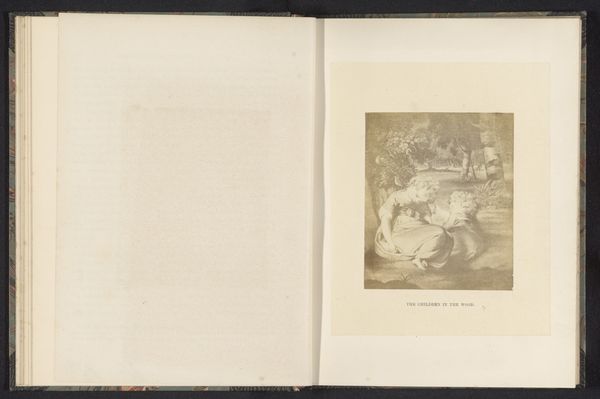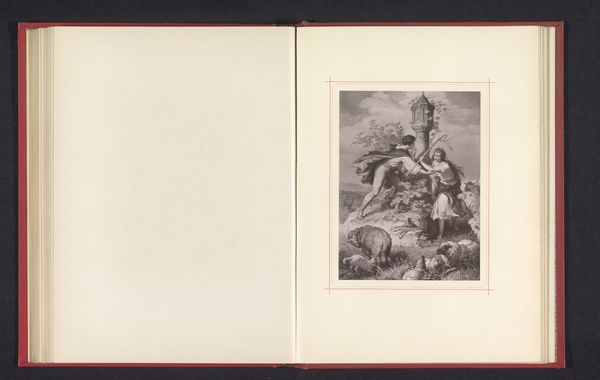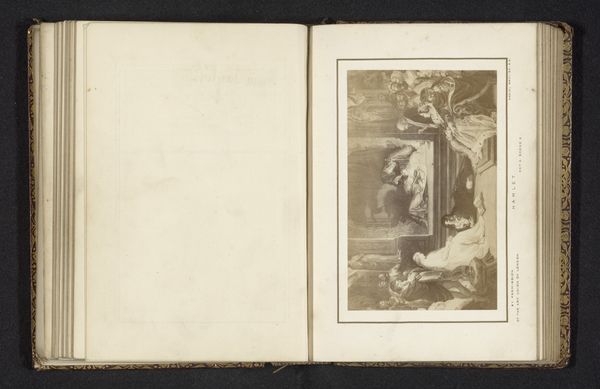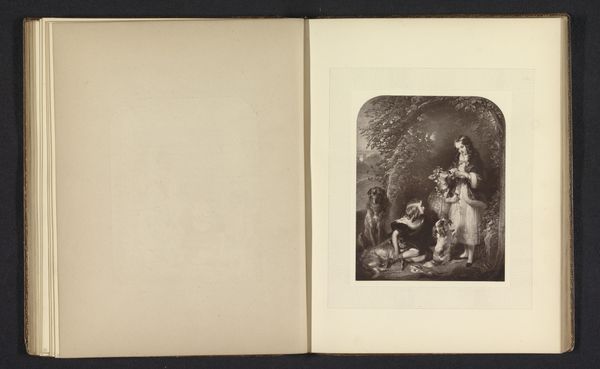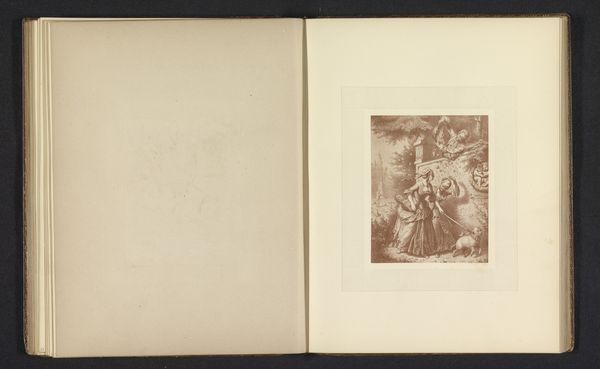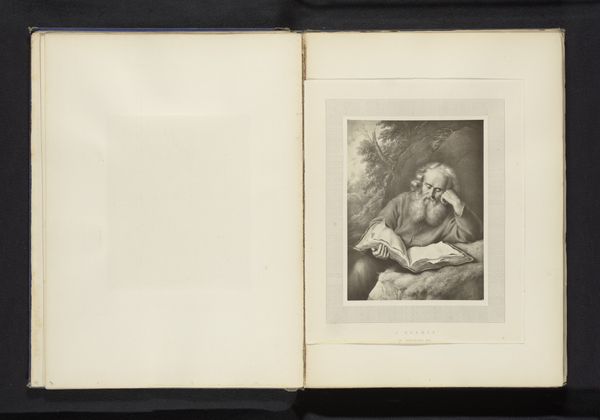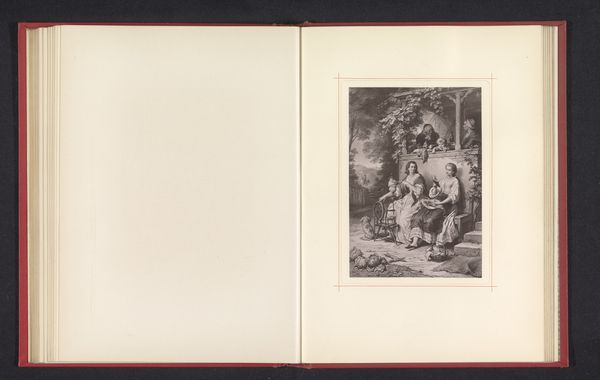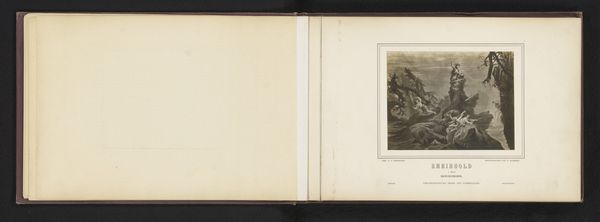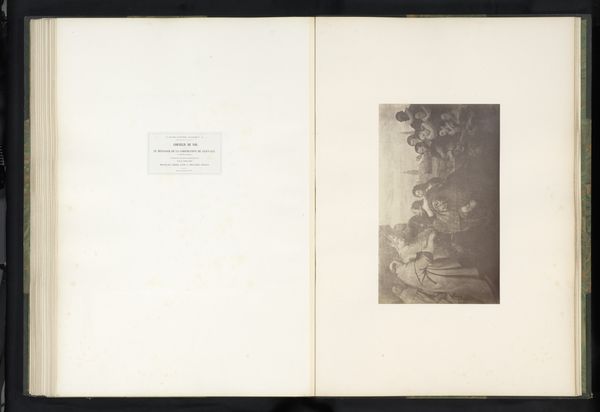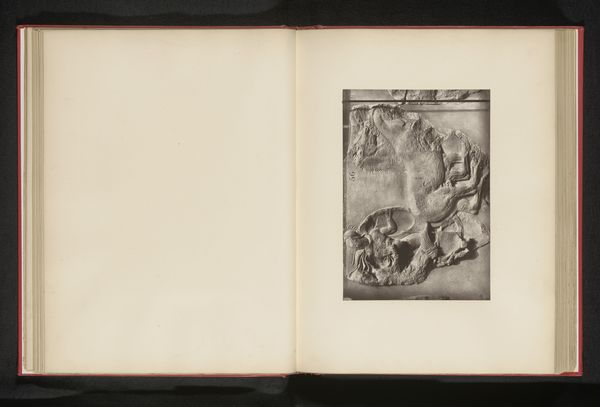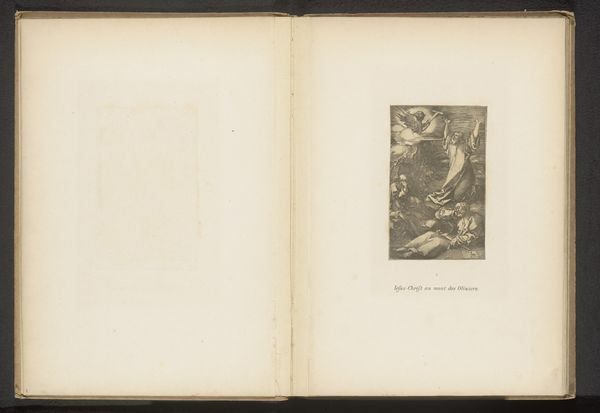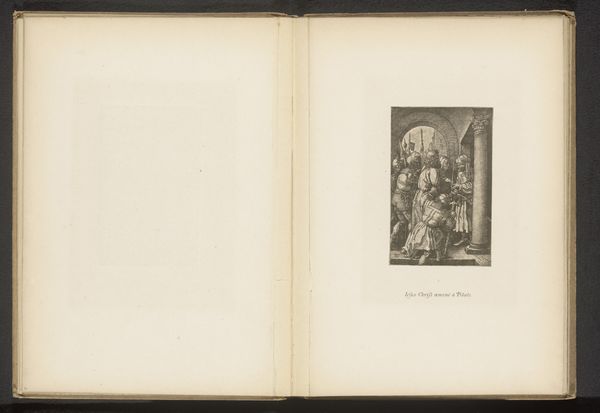
Fotoreproductie van een prent naar een schilderij met kinderen op een rotskust door Adolph Tidemand before 1874
0:00
0:00
Dimensions: height 118 mm, width 93 mm
Copyright: Rijks Museum: Open Domain
Curator: Here we have a photo reproduction of a print, likely based on a painting, by Adolph Tidemand titled “Children on a Rocky Coast.” The artwork dates back to before 1874. Editor: It strikes me immediately as quite bleak, almost somber. The grayscale tones, the rugged coastline, even the children seem to have a sense of…melancholy. Curator: Given that it’s a photo reproduction of a print, we need to think about the process itself. Photography in this era was developing alongside printmaking. It was used to disseminate images widely to a growing middle class and working class audience who may not have been able to experience the original work. Editor: That makes me consider how such dissemination democratizes access, but simultaneously detaches the work from its original context, becoming its own new cultural product with attendant layers of mediation and interpretation. Curator: Exactly. Prints made art more available, yes, but through a very particular set of material conditions. The texture of the paper, the limitations of photographic technology at that time – all play a role. And the choice of subject, two children on the coast, in itself tells a story. Coastal areas, often represented as sites of adventure, also signify labour, migration and displacement. Editor: It brings to mind the socio-political context of the time; romantic notions of childhood innocence juxtaposed with harsh realities like child labor within these maritime communities. Were they simply admiring the vista, or waiting for the return of a fishing boat and absent parent? Curator: An open question and that highlights what this piece may reveal regarding labor practices or gendered expectations within a very particular social stratum of the time. It could be read on an almost documentary level – although heavily stylized in the Romantic style. Editor: Absolutely. It captures something about how notions of childhood, class, and labour all intersect. I wonder if a work like this acted as both a form of romantic escapism as well as potential commentary regarding society and power during the era. Curator: By analyzing how the print and the photo-reproduction were made and distributed, we come to terms with art’s engagement within evolving technology and markets. Editor: Yes, exactly. Thank you. It’s really fascinating when you consider it in that light. Curator: Glad to add some texture.
Comments
No comments
Be the first to comment and join the conversation on the ultimate creative platform.
